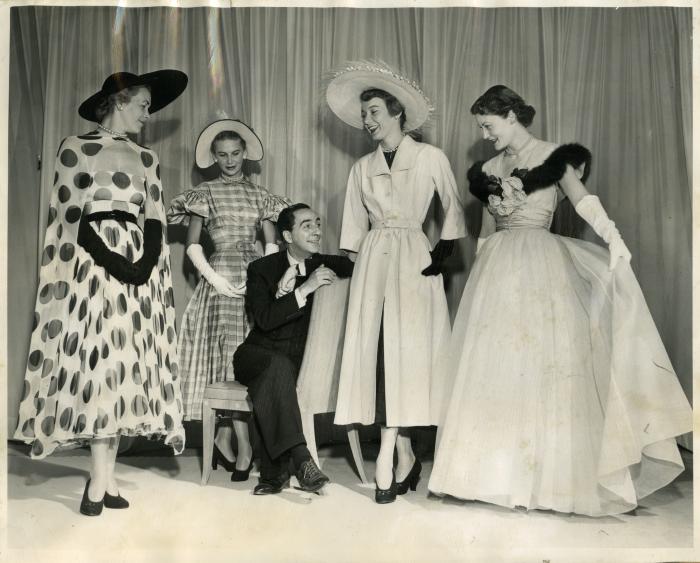
Fashion is an industry that operates in a deafeningly fast manner in all aspects.
Many designers produce, at minimum, four collections per year: a spring/summer collection, a fall/winter collection, a pre-fall collection, and a resort collection (for more on what these collection titles mean, read this handy article).
That’s not to mention whether or not a brand creates two haute couture collections (fall/winter and spring/summer) every year, as well.
Surrounding this speed of clothing – and all of the intended and unintended consequences that it produces – is an endless assortment of buyers, executives, models, photographers…..and journalists.
Fashion journalism’s eternal task is to take note of what is happening within (and surrounding) the fashion industry and translate it to inquiring minds. But to state that this is our only obligation to the field would be incorrect. Fashion journalists should, ideally, also find the stories worth telling and let the public know what we have found. We should inquire and inform – and keep the public’s attention while we’re at it.
But what happens when this unnatural pace becomes too much to cover? What happens when, in order to meet deadlines thrust upon us in covering this mad onslaught of shows, news, and events, we compromise the quality of our work? And once we do that, are we truly serving anyone at all?

Enter “slow journalism”.
Slow journalism – in our definition, we also call it “slow media” – began to be mentioned by different sources in the late 2000s-early 2010s. In 2008, the Columbia Journalism Review featured an article titled “Overload!” – as in, an overload of information and news. If article author Bree Nordenson thought that 2008 was an onslaught, then what do we have in 2022 – fourteen painful years later?
Well, we’ve got plenty of things, with great journalism ranking near the bottom of the list.
We have “churnalism“, which is a process by which journalists create news articles using press releases put out by organizations such as public relations companies without verifying the correct nature (or lack thereof) of what they’re using to write their articles.
The clear problem with this is that by using documents such as press releases to write one’s articles, you’re automatically purveying information to the public based on information that has no choice but to have a slanted agenda. PR companies, the government, and companies themselves exist to make either themselves or their clients look good. They do not have an allegiance to the truth. They do have an allegiance to their reputation and their pockets.
We also have automated journalism, used by companies such as the Washington Post, the Associated Press, and the Los Angeles Times. While many advocates of automated journalism – also known by some as “bot journalism” – state that it takes on stories that do not interest human journalists (such as financial reports or detailed sports stats), automated journalism does speak to the issue that our world has with wanting to be constantly fed new information without any delay.

That leads to the next question, which is this: what is this fascination that we have with speed? This is not an issue unique to fashion or fashion journalism, but it is a problem that those of us in fashion take – and multiply it by 100. When there is a fashion week of any sort, for example, journalists rush to see each show – often multiple shows per day – and then rush home (wherever “home” is for the night) to write a review for each show while trying to get it in before the next day so that their information can be first to be seen online.
Problem is, this doesn’t actually result in great reviews. Many fashion reviews these days by journalists don’t necessarily do much to help those with a vested interest, whether that is fashion consumers or other fashion industry members, to understand the show any better than your average fashion blogger or fashion entertainer could. And, in an era where simply having the correct number of followers on social media determines how seriously that one is taken by the fashion industry, it is very much necessary for journalists to have more to offer than the usual fawning reviews mixed in with a few photos of the looks on the runway.
This is not only an issue with runway reviews. This obsession with speed and being first permeates all levels of fashion journalism. Simple fact-checking and grammar-checks have both been a casualty of this unfortunate means of existence. So have stories with any level of intimacy and depth. Indeed, fast journalism (also known as today’s status quo) means that stories that take too much time to vet and research will likely not get the attention that they deserve. This results in what could otherwise be good stories coming out rushed, laden with errors, and that connect emotionally with no one. Because we all know that churnalism sells.
Only, it doesn’t.

One need only look to the number of media outlets that have been either closing their doors entirely, refocusing their efforts on digital, or consolidating their editorial teams in order to cut costs. Readers may have short attention spans these days, but from our experience in speaking with our audience for Manic Metallic, those that read our work expect quality work that asks questions and does the work to find answers while allowing for discussion on the topic at hand. In other words, Manic Metallic’s readers expect inquiry and information. They expect journalism.
Manic Metallic is not, and has never been, a media company that takes any interest in churning out story after story unless it is a well-researched and well-informed document. Writing these types of articles takes time – time that we insist on taking because to do any less is a betrayal of our better instincts. And it is a betrayal of our audience.
This speed through which our society completes its journalistic work on a regular basis is not only dissatisfying – it is toxic. The race to be the first to get the “scoop” on a news story is a race to the bottom with regard to quality, and we cannot continue to stand for it. Some may argue that journalists are only responding to a public that demands more, demands it quickly, and demands it yesterday. There is a small modicum of truth to this statement. After all, we live in an instant gratification society that cannot wait to get its next fix. For many, fast news is our drug, and we have become dependent.
At Manic Metallic, however, we happen to believe that there is a large appetite out in the world for good, quality fashion journalism. That is why we exist. We insist on creating well-informed and well-researched audio, video, and written content that, though it may take time to create in some cases, will ultimately serve our audience, the fashion industry, and the profession of journalism in a more satisfying manner overall.

We must begin to care more about both what we’re putting out into the world and about our contributions to society; we must care about that more than we care about our bottom line. We can, in fact, care about both. If and when we insist on excellence, and we begin to put out more quality work, those that appreciate quality will support our work as media and journalistic outlets.
If we don’t, however, respect our own work and our own processes as journalists, then we cannot expect that consumers will respect our contributions to society.
We get out of something the type of energy that we put into it. If journalists and the media do not put time, attention, and care into their stories, then why should readers put any more time, attention, and care into reading? It becomes a mutual lack of caring – a mutual apathy – on the part of the media and readers that leaves good, quality journalism holding the bag.
Slow journalism makes for better, more quality work. It makes for a more informed individual reader and a better-informed overall public. How? Because it insists on taking the necessary time to gather all of the facts, check its sources, and rejects the need to be the first to report something if it means compromising on high-caliber work. It builds a connection with both its journalistic subject(s) and its audience.
And it won’t settle for any less than that.
To subscribe to Manic Metallic‘s Substack newsletter, click here. To follow us on Bluesky, click here.


